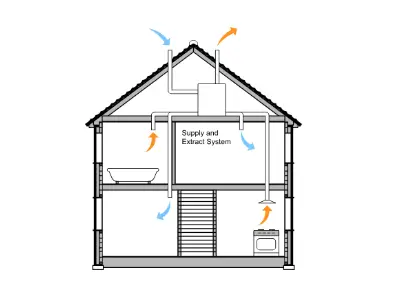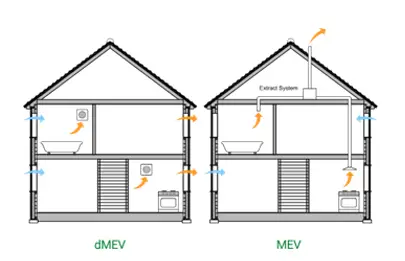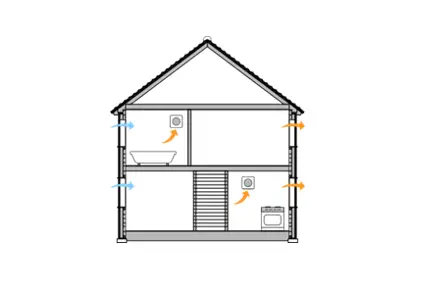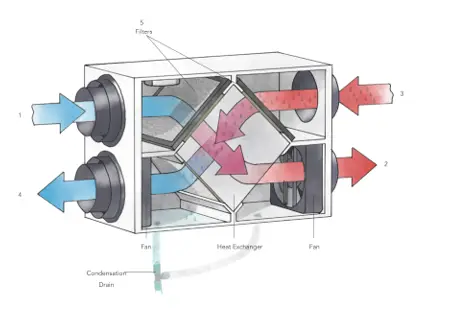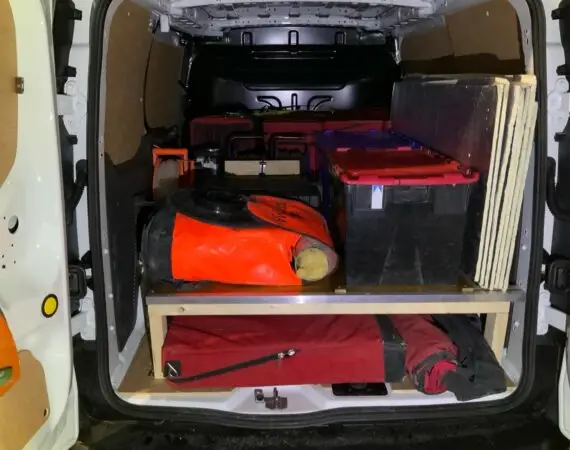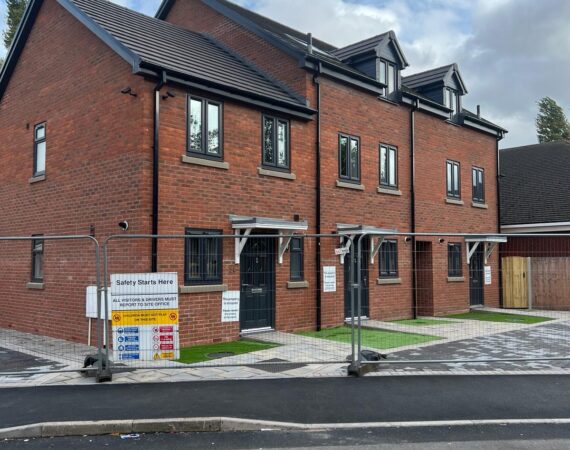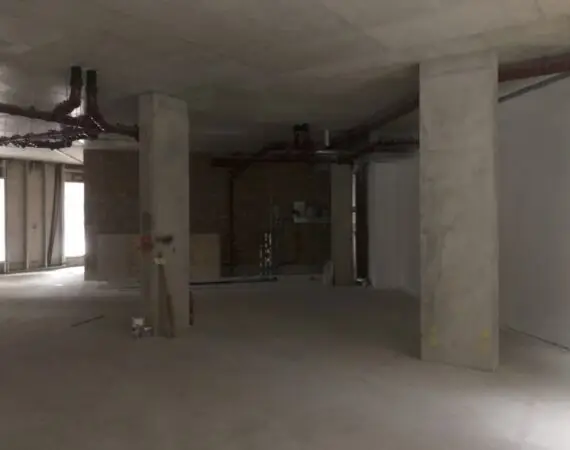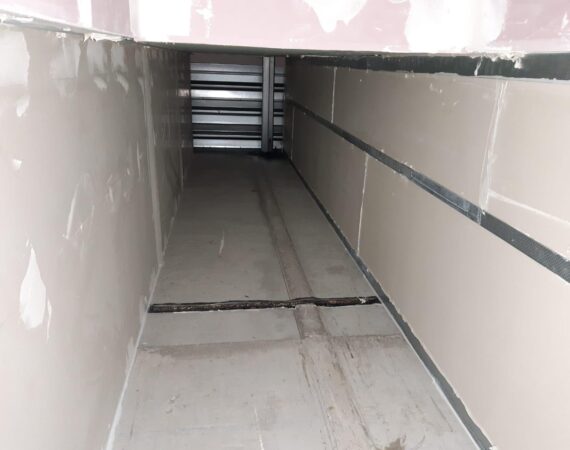We work with other industry specialists, seeking to provide the most innovative solutions for our clients. We have partnered with RB Energy and Sustainability Services to offer the following services. SAP assessments for new builds to meet Part L compliance. Substantial glazing calculations for extensions SAP assessments for change of...
Mechanical Ventilation with Heat Recovery (MVHR) (previously known as System 4)
MVHR is a whole house system that extracts air from wet rooms while supplying fresh, filtered air into habitable rooms.It must meet the whole dwelling ventilation rates set out in Table 1.3The heat recovery minimum efficiency has increased from 70% to 73%The extract airflow must match the supply airflow to...
Continuous Mechanical Extract (previously known as System 3)
A continuous mechanical extract ventilation system could consist of one of the following.A central extract system is known as MEV (mechanical extract ventilation).Individual rooms with continuous extract fans are known as dMEV (decentralised mechanical extract ventilation).A combination of both MEV and dMEV.It also requires correctly sized and fitted trickle vents...
NATURAL VENTILATION (previously known as System 1)
NATURAL VENTILATION (previously known as System 1) Intermittent Extract Fans with background ventilators Suitable for less airtight dwellingsA design air permeability higher than 5m³/(h¹·m²) at 50Pa.An as-built air permeability higher than 3m³/(h¹·m²) at 50Pa.Intermittent extract fans should be provided in the following locations.Kitchens.Utility rooms.Bathrooms.Sanitary accommodationIt also requires correctly sized and fitted trickle...
Why is it important to ventilate?
Why is it important to ventilate?Ventilation is necessary to provide a healthy and comfortable internal living environment. The main goal of ventilation is to replace polluted indoor air with fresh outdoor air through purpose-provided openings. The Approved Document Part F (means of ventilation) of the Building Regulations for England and Wales...
Airtightness Standards and Regulations
Changes to the New Build regulation as of June 2022.The ability to sample test has ceased, and all new builds must be tested.Singular self-builds are no longer able to claim an exemption from testing.The general requirement is for dwellings tested to comply with a maximum air permeability of 8m³/(h¹.m²) @...
Airtightness Checklist
Airtightness ChecklistOur airtightness checklist is designed to help developers monitor airtightness throughout their projects. It is intended as a guide only. Where complicated junctions are involved, or construction is undertaken with different build systems, we advise you to seek our advice for your specific project.Don't hesitate to contact us for...
Air Permeability Testing Confirmation of Readiness to Test
Temporary sealing guidance All temporary sealing shall be carried out internally or externally but not both and in line with the guidance set out in this form.Mechanical ventilation MVHR units and extractors, such as the bathroom, kitchen, and cooker hoods, should all be temporarily sealed.Trickle ventilatorsTrickle ventilators must be fitted,...
Shell and Core Air Test
In January 2021, ATTMA introduced a new certificate for shell and core buildings at the pre-fitout stage. This new certificate had a change in colour of the tables from blue to brown, and the text in the top left of the certificate was changed from “Certificate of Air Permeability Test”...
Smoke Shaft Testing
A smoke shaft is a common term for a ventilation system within lobby areas of tall buildings. The shaft has closable smoke-controlled dampers on each floor; only the damper on the floor with the fire is open to enable smoke extraction from the lobby to support tenable conditions.The smoke shaft...


